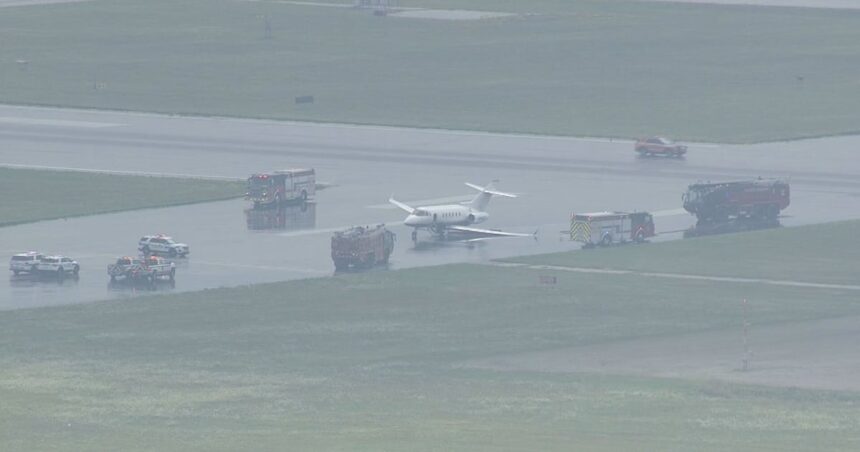The afternoon wasn’t going according to plan at Canada’s busiest travel hub. As raindrops pelted the tarmac at Toronto Pearson International Airport yesterday, a private aircraft’s damaged landing gear triggered an operational shuffle that impacted dozens of flights and thousands of travelers.
According to airport officials, the incident occurred around 2:30 p.m. when a small private plane sustained damage while touching down on runway 06L/24R. The Greater Toronto Airports Authority (GTAA) immediately implemented emergency protocols, closing two of the airport’s five runways while emergency crews assessed the situation.
“Safety remains our absolute priority,” said Beverly MacDonald, spokesperson for the GTAA, in a statement to media outlets. “The aircraft’s occupants were safely transported to the terminal building, and no injuries have been reported.”
For regular Canadians caught in the travel disruption, the runway closures created a ripple effect of delays. Janet Thompson, traveling home to Halifax, described the scene inside Terminal 1. “The departure boards started showing delays across the board. People were getting antsy, but the staff kept us informed about what was happening on the runways.”
By early evening, airport officials had managed to reopen both affected runways, but not before approximately 47 flights faced delays ranging from 30 minutes to over two hours. Airlines including Air Canada and WestJet issued travel advisories through their social media channels, encouraging passengers to check flight status before heading to the airport.
This incident comes during one of Pearson’s busiest travel periods. The airport has been handling upward of 130,000 passengers daily throughout the summer season, according to Statistics Canada transportation data released last month.
The aircraft involved was identified as a Cessna Citation, a popular business jet model. The Transportation Safety Board has dispatched investigators to determine what caused the landing gear malfunction. Early reports suggest weather conditions may have been a contributing factor, though officials caution that a comprehensive investigation will take time.
Pearson’s operational resilience was tested but ultimately proved effective, according to aviation analyst Cameron Fraser. “Major airports maintain robust contingency plans precisely for these scenarios,” Fraser explained when reached by phone. “The GTAA’s response demonstrates the importance of having redundant runway capacity at our nation’s transportation hubs.”
For the broader Toronto economy, even brief disruptions at Pearson can have measurable impacts. The airport contributes approximately $42 billion annually to Ontario’s economy, according to a 2019 economic impact study commissioned by the GTAA.
Local business traveler Mark Rodriguez, whose flight to Montreal was among those delayed, expressed frustration but understanding. “These things happen, and I’d rather they take all necessary precautions than rush things back to normal at the expense of safety.”
By 8 p.m., airport operations had largely returned to normal, though some residual delays continued into the evening hours. The incident serves as a reminder of how quickly aviation disruptions can cascade through the system, affecting thousands of travel plans in the process.
NAV Canada, which manages Canadian airspace, temporarily implemented flow control measures to ensure safe spacing between arriving and departing aircraft while the airport operated with reduced runway capacity. A spokesperson noted that air traffic controllers handled the situation with “professionalism and adherence to established safety protocols.”
For Pearson, which has faced criticism in recent years over passenger processing times and baggage handling issues, yesterday’s incident demonstrated the airport’s ability to manage unexpected operational challenges. Airport management confirmed that terminal operations continued without major disruption, with ground crews working overtime to process delayed flights once runways reopened.
As darkness fell over Canada’s largest airport, the last of the significantly delayed flights departed. The damaged aircraft had been moved to a maintenance hangar for further assessment, and the normal rhythm of takeoffs and landings resumed under the watchful eye of the control tower.
For those wondering what happens next, aviation regulations require a thorough investigation before official conclusions can be drawn about what went wrong with the private aircraft’s landing gear. Those findings will likely inform safety recommendations for similar aircraft in the future – part of Canada’s multilayered approach to maintaining its strong commercial aviation safety record.






